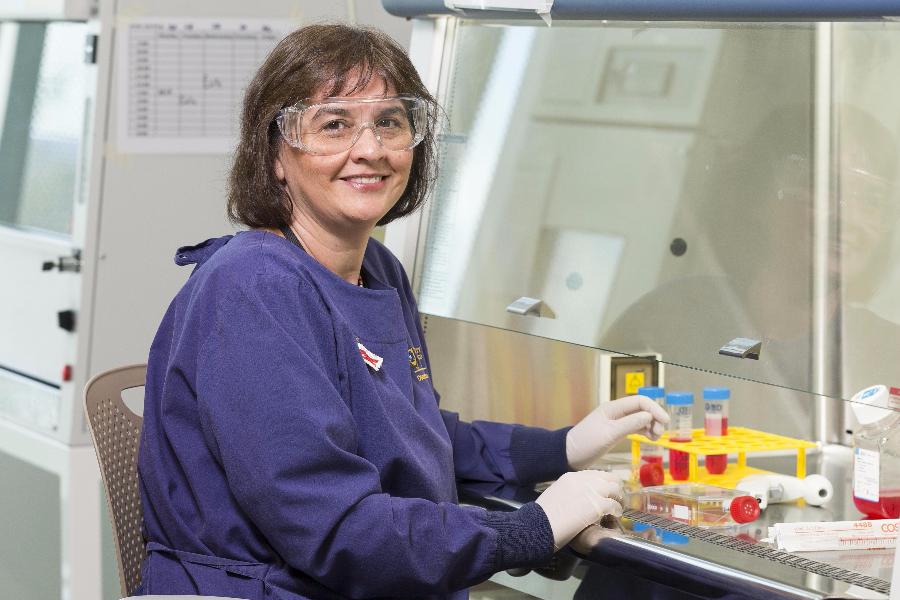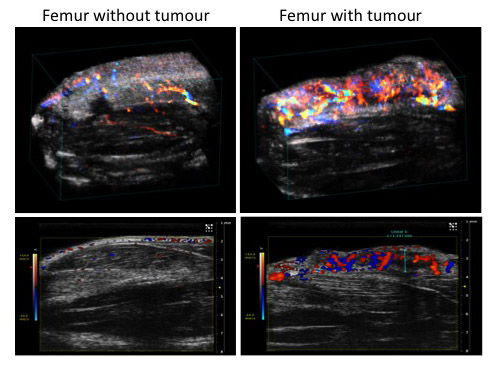 By Dr Fiona McMillan
By Dr Fiona McMillan
University of Queensland Diamantina Institute researcher Dr Liliana Endo-Munoz has identified two proteins that play a pivotal role in enabling bone cancer tumours to spread throughout the body. Moreover, her research reveals that disrupting the activity of either of these proteins substantially reduces the spread of bone cancer in mice.
Osteosarcoma (OS) can strike at any age, but arises most often in teenagers. It is the most common childhood bone cancer and the third most common cancer in adolescence, following lymphomas and brain cancers.
800 new patients are diagnosed with OS every year in the US — half of whom are under the age of 20 — and the disease follows a similar incidence rate worldwide.
Unfortunately, because the disease often presents at an age associated with growth spurts and high levels of physical activity, symptoms can be mistaken for growing pains or sports injuries.
Prognosis hinges on whether or not the cancer has already spread to other tissues via a process called metastasis. OS metastases have a preference for lung tissue, and at the time of diagnosis, up to 80% of patients already have very small ‘micro’-metastases in their lungs. Ultimately, half of all OS patients develop metastatic OS, which is associated with poor survival.
Recently, Endo-Munoz discovered that not all cells in a bone cancer tumour have the same capacity to spread throughout the body. This finding led her to compare the profiles of tumour cells that spread with the profiles of tumour cells that stay put. This involved not only looking at the individual genomes but also comparing which proteins are used more often by each type of tumour cell. Two proteins in particular stood out.
“We found elevated levels of the urokinase plasminogen activator (uPA) and of the uPA receptor (uPAR) exclusively in metastatic OS cells,” she explains.
“These proteins interact with one another resulting in the breakdown of the cell membrane, an increase in cell migration, an increase in the generation of new blood vessels, and the activation of a number of growth factors, all of which contribute to an increase in tumour cell proliferation, invasion and metastasis.”

Doppler images showing increased vasculature and blood flow in the presence of an osteosarcoma which contributes to an increase in tumour cell proliferation, invasion and metastasis.
Endo-Munoz wondered if disrupting either protein was enough to reverse the effect. Indeed, when she silenced the gene for uPAR, the cells’ ability to migrate was significantly reduced.
Interestingly, there are a small number of drugs that block uPA in clinical trials for other cancers, but their effect on cancer spreading is unknown and no one has ever tested them on OS before. Endo-Munoz initiated a collaboration with a biotechnology company that has a uPA inhibitor in development. When she tested the drug on mice with OS, it substantially inhibited metastasis.
Not only does Endo-Munoz’ research clearly demonstrate that OS depends on uPA and uPAR in order to become malignant, it shows that there is potential to block that process and stop the cancer from spreading.
OS also happens to be a common bone cancer in dogs. As such, Endo-Munoz hopes to commence a trial of the drug in a canine model of OS in the next year. The outcomes of such a trial would serve as a crucial stepping stone toward future human clinical trials and may also reveal the potential for veterinary uses.
The research has been published in the journal PLOS ONE.
Media: Kate Templeman, +61 (0)7 3443 7027 or 0409 916 801, k.templeman@uq.edu.au



